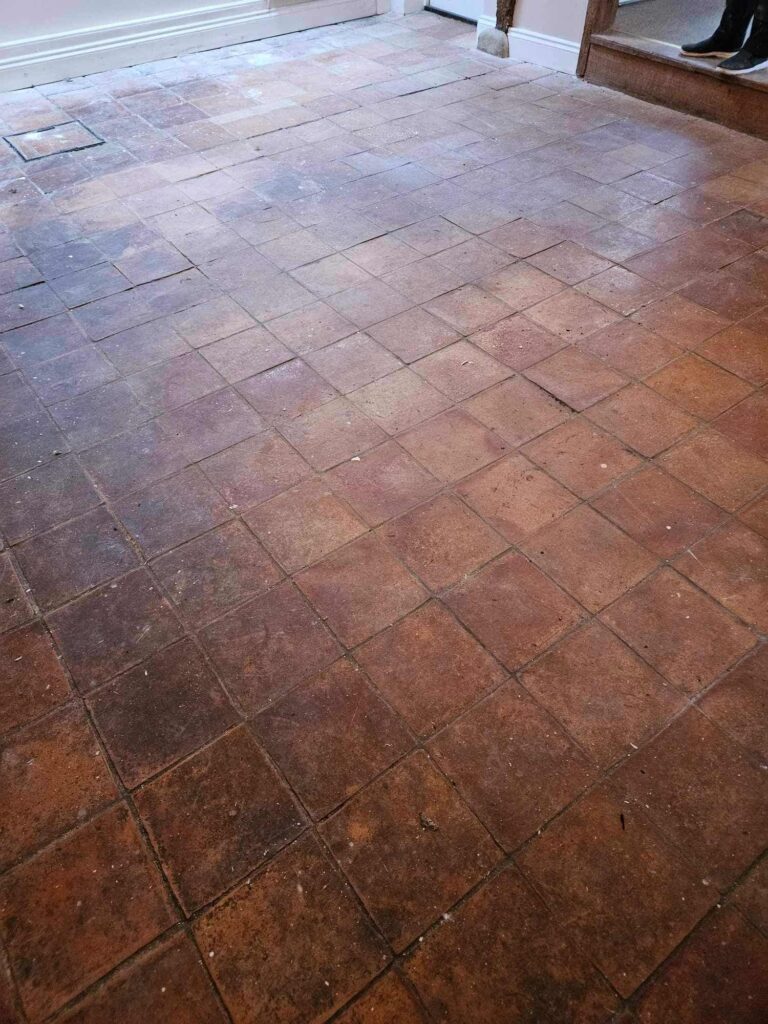This Terracotta tiled floor was in the kitchen of a house in the river side town of Woodbridge. The client had inherited the property and was looking to freshen it up prior to selling. The house had terracotta floors in nearly every room on the ground floor including a cellar, some areas of which were showing signs of damp.

After visiting the property, I could see the terracotta clearly hadn’t been sealed for some time as the dirt was well ingrained into the pores of the tile and it would need a deep clean to get it all out. After carrying out a few tests I was able to come up with a renovation plan and produce a quote for the work. Happy to proceed we agreed a date for the work to begin which would take four days.

Cleaning a Terracotta Tiled Ground Floor
To get the floor clean I started with a strong dilution of Tile Doctor Pro-Clean, which was applied to the tiles and left to soak in for ten minutes. The dwell time gives the product time to break down the soiling before scrubbing. The product was then worked into the tile and grout using a Black pad fitted to a rotary floor machine.
The grout was also scrubbed by hand using our wire brushes to get it as clean as it could be. All the soils released from the tile were rinsed away with water and then extracted using a wet vacuum. Most of the floors were quite dirty so after inspecting the floor they were re-treated until we were satisfied. Five litres of Tile Doctor Pro-Clean were used in the process.
The damp areas were treated to an acid wash using a product called Tile Doctor Acid Gel, this neutralises any alkaline efflorescence that may have built up in the floor. The gel was brushed into the floor and then the resultant slurry removed by rinsing and the wet vacuum as before.
Sealing a Terracotta Tiled Ground Floor
The floors were then left to dry out over a weekend, and we then returned the following week to apply a sealer. Before doing so several moisture readings were taken with a damp meter to make sure the floor was dry. The readings were satisfactory, so the floors were then sealed with Tile Doctor Colour Grow, which is a breathable impregnating sealer. There were several floors to do and with Terracotta being quite porous five litres of sealer were needed for this.

The client was happy that we had managed to get the floors looking so good. We left a free bottle of Tile Doctor Neutral Cleaner for the client to use to maintain their floor. This should keep it looking good and the property now looked much more appealing to a potential purchaser.

Source: Terracotta Floor Cleaning and Renovation Service in Woodbridge Suffolk